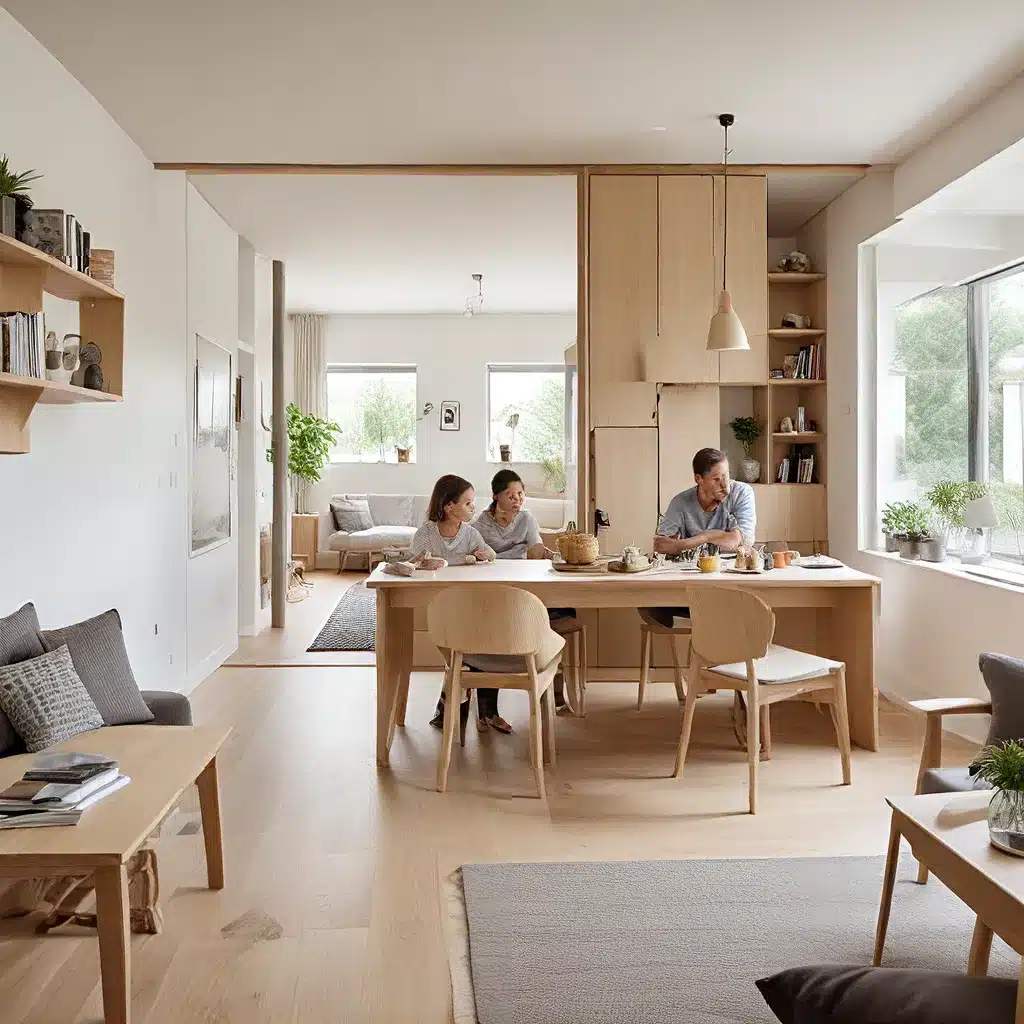
In the ever-evolving landscape of modern living, our homes have become more than just places to reside – they’ve become hubs of versatility and adaptability. As our lifestyles, work arrangements, and family dynamics shift, the concept of a one-size-fits-all living space is rapidly giving way to the idea of multi-use, flexible areas within our residential abodes.
Designing for Flexibility and Future-Proofing
Whether you’re planning a new home or renovating an existing one, designing with flexibility in mind is crucial to ensuring your living space can adapt to your changing needs and aspirations. By employing strategic design techniques and selecting versatile furnishings, you can create a dynamic, ever-adapting environment that seamlessly caters to your evolving lifestyle.
One of the primary considerations in designing flexible spaces is functional flexibility. Instead of compartmentalizing your home into rigid, single-purpose rooms, opt for open floor plans that can easily be divided or combined as needed. Incorporate movable furniture and built-in storage solutions that can accommodate various uses, such as a room that can serve as a home office, playroom, or guest bedroom, depending on your family’s current needs.
Another effective strategy is zoning. Create different zones within a room by using rugs, lighting, or furniture placement. This allows the same space to serve multiple functions without feeling cluttered. For example, one area of a large living room can be dedicated to watching TV, while another serves as a reading nook or play area.
Maximizing Storage and Efficiency
Built-in storage is a crucial element in flexible living. Maximize your space with customized cabinets, shelves, and closets that can be tailored to suit specific needs, such as toy storage, sports equipment, or hobby supplies. Closets with adjustable shelving can easily adapt to changing storage requirements as your family’s needs evolve.
When designing flexible spaces, it’s important to future-proof your home. Incorporate features that can accommodate potential lifestyle changes, such as wider doorways and grab bars in bathrooms for aging-in-place, or sufficient electrical outlets and data connections for a potential home office.
Multipurpose Rooms and Flex Spaces
Designating multipurpose rooms can be particularly beneficial in flexible living. For instance, a guest bedroom with a built-in desk and storage can also serve as a home office. Alternatively, a basement or attic can be transformed into an income-generating rental unit or an additional living space for teenagers or in-laws.
Another valuable concept is the flex room, which can easily be transformed to meet changing needs. A sunroom or enclosed porch, for example, can become a playroom, art studio, or fitness space. Ensure these rooms have proper insulation and climate control for year-round use.
Outdoor Spaces and Sustainability
Don’t forget about your outdoor spaces. Create versatile outdoor areas that can accommodate various activities, from gardening to entertaining to children’s play. By incorporating sustainable and energy-efficient design principles, you can not only reduce your environmental impact but also save money in the long run, allowing you to allocate resources to other evolving needs.
Maintaining open communication with your interior designer is key. Regular check-ins can help you assess how your needs and preferences are evolving, enabling them to make minor adjustments to your existing spaces without the need for major renovations.
The Role of Furniture and Flooring
In the world of flexible living, furniture and flooring play a pivotal role. Versatile furniture designed to serve multiple functions, such as Murphy beds, extendable tables, and sleeper sofas, can adapt to your changing needs and maximize your space efficiency.
Similarly, easy-to-change flooring options offer a range of benefits. With the ability to quickly transform the look and feel of a room, you can experiment with various patterns, textures, and colors to create different atmospheres and moods. Easy-to-maintain and durable flooring solutions, such as marmoleum, carpet tiles, or luxury vinyl plank (LVP), can also cater to the diverse activities that take place in a flex space.
Embracing the Future of Flexible Living
As our lifestyles continue to evolve, the need for adaptable, multi-functional living spaces has become increasingly crucial. By incorporating flexible design principles, strategic storage solutions, and versatile furnishings, you can create a home that not only meets your current needs but also seamlessly adapts to your future aspirations.
Partnering with a skilled interior designer can be invaluable in this process, as they can help you navigate the complexities of flexible design and ensure your living space is tailored to your unique requirements. Embrace the future of flexible living and transform your home into an ever-evolving, adaptable abode that caters to your family’s changing needs and enhances your overall quality of life.

